In Rome, the Gallerie Nazionali di Arte Antica (National Galleries of Ancient Art) present the refurbishment of the Salone Pietro da Cortona in Palazzo Barberini: this majestic space, one of the most representative symbols of the Roman Baroque, reopens to the public with a completely renewed look that gives back to the city one of its most emblematic environments in full historical and artistic coherence.
The fulcrum of the intervention is the relocation of the preparatory cartoons of the cycle of The Life of Urban VIII, a series of works of extraordinary value that are presented in the original context for which the tapestries that would have derived from those very cartoons were conceived. After decades of absence from the exhibition scene, and thanks to a meticulous restoration operation conducted by the National Galleries Laboratory, the cartoons are back on view in the great hall frescoed by Pietro da Cortona between 1632 and 1639, with the celebrated Triumph of Divine Providence, in a visual and conceptual dialogue that enhances the magnificence of Baroque art.
This operation, the result of a rigorous philological study, is not limited to a museum exhibition but is intended to take the form of a kind of historical restitution. For the first time, in fact, the cartoons are re-presented in an arrangement that evokes the original function of the salon: an environment intended for the celebration of the power and glory of the Barberini family, one of the most influential families in 17th-century Rome. The salon thus returns to being a place of representation in its full seventeenth-century sense, recovering the sense of the figurative narrative desired by its patrons.

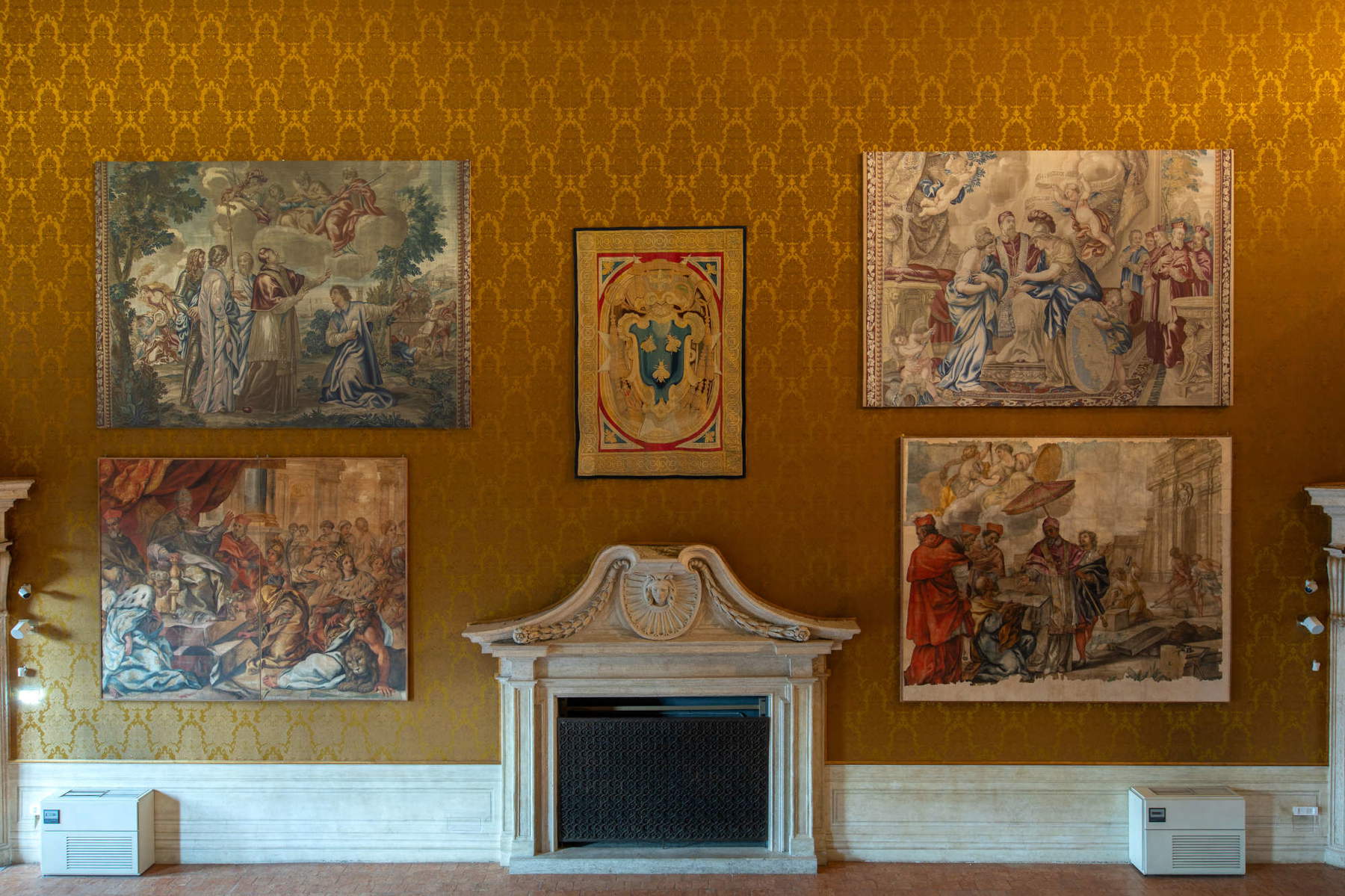
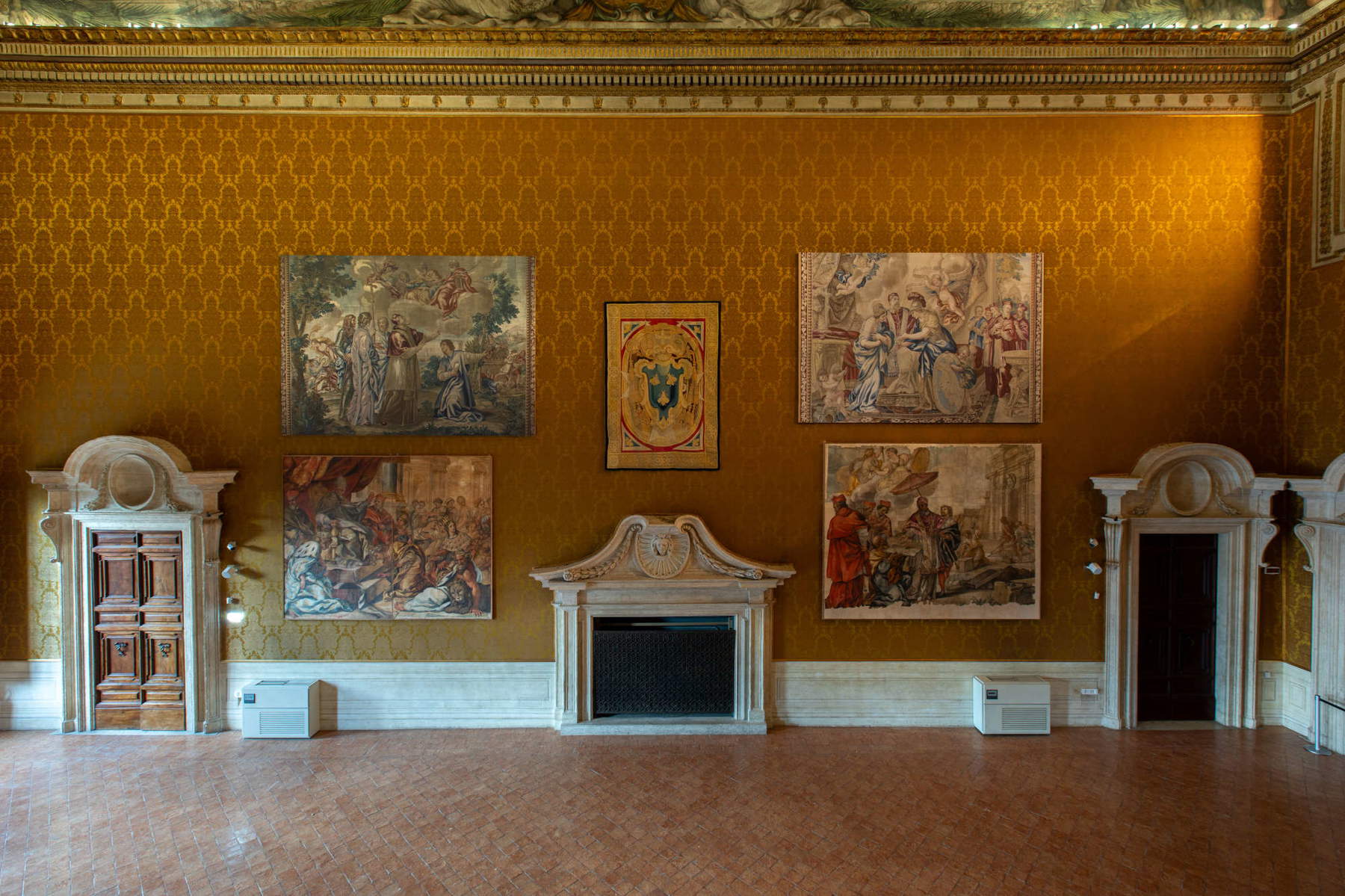
The project has its roots in one of the most fascinating artistic events of seventeenth-century Rome. It was Cardinal Francesco Barberini, nephew of Pope Urban VIII, who in 1627 established the Manifattura Barberini, one of the first tapestries in Rome. The starting point was a gesture of great political and symbolic significance: a gift of seven tapestries made to designs by Rubens, offered by King Louis XIII of France. This gift, of inestimable value, suggested to the cardinal the creation of a new cycle of celebratory tapestries, dedicated to the life of his uncle the pontiff. The intent was twofold: to affirm the prestige of the Barberini lineage and to contribute to the construction of a public image of the papacy marked by magnificence.
The cycle of The Life of Urban VIII is the result of this vision. It is a monumental work in which the biography of the pontiff is interwoven with religious and political allegories in a visual narrative that glorifies not only the papacy but also the dynasty that expressed it. The preparatory cartoons were entrusted to artists from Pietro da Cortona’s circle (Antonio Gherardi, Fabio Cristofani, Giuseppe Belloni, Pietro Locatelli, Giacinto Camassei), who produced life-size drawings intended to be translated into fabric through the complex “basso liccio” technique used in the manufacture. In contrast to the usual practice, the Barberini family decided to preserve these cartoons, immediately recognizing their artistic value, and proudly displayed them in the halls of their palace.
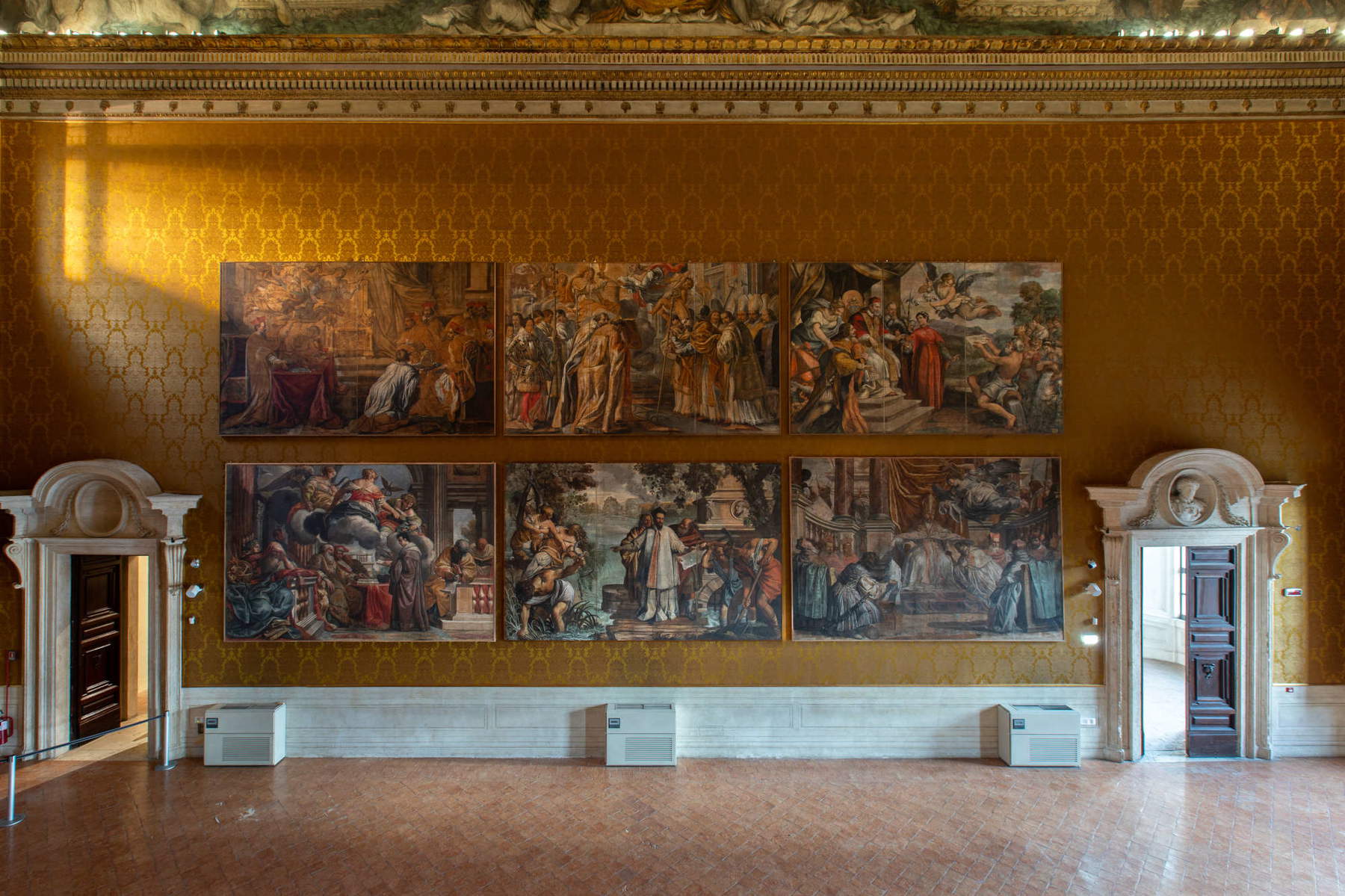
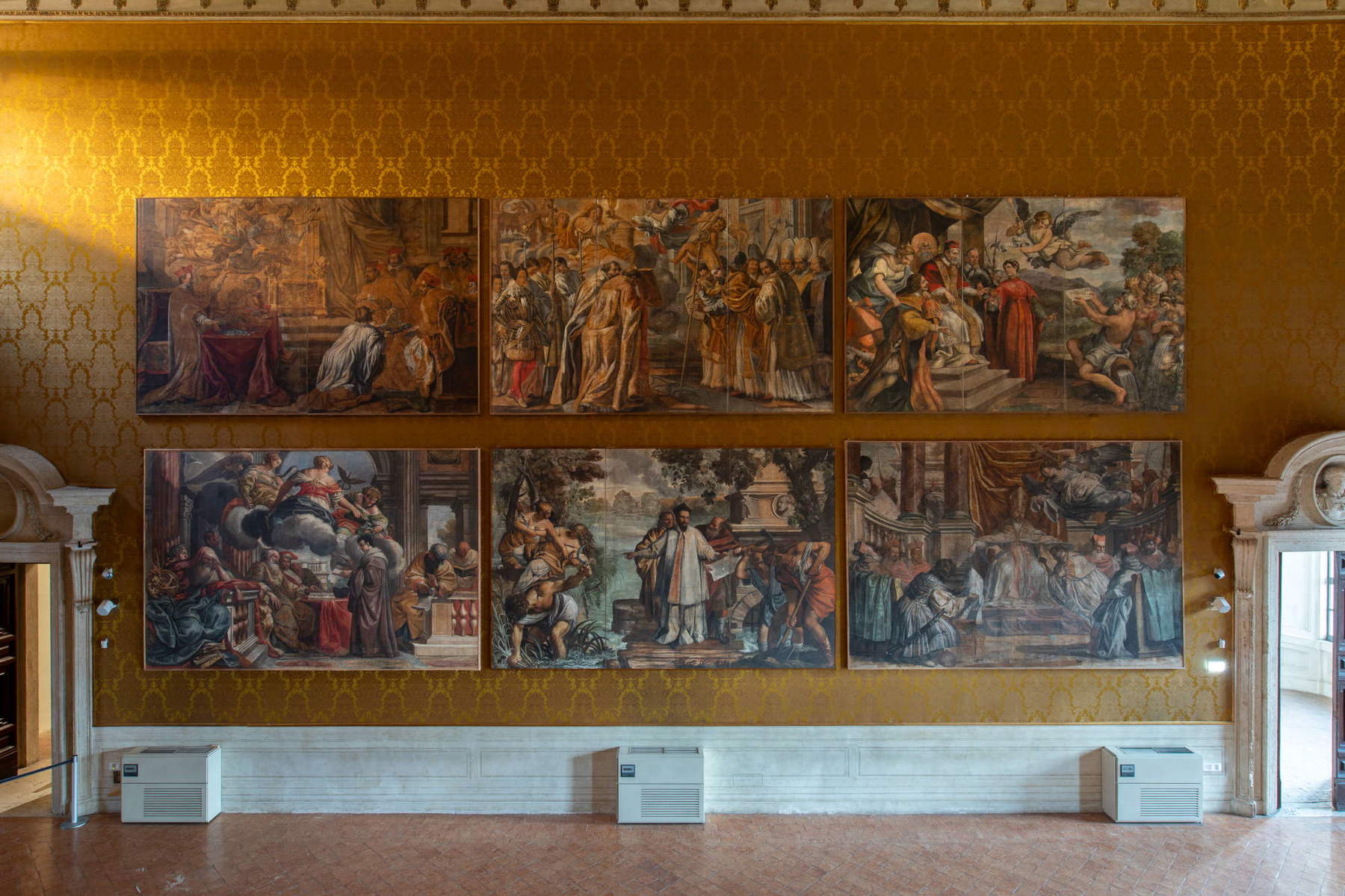
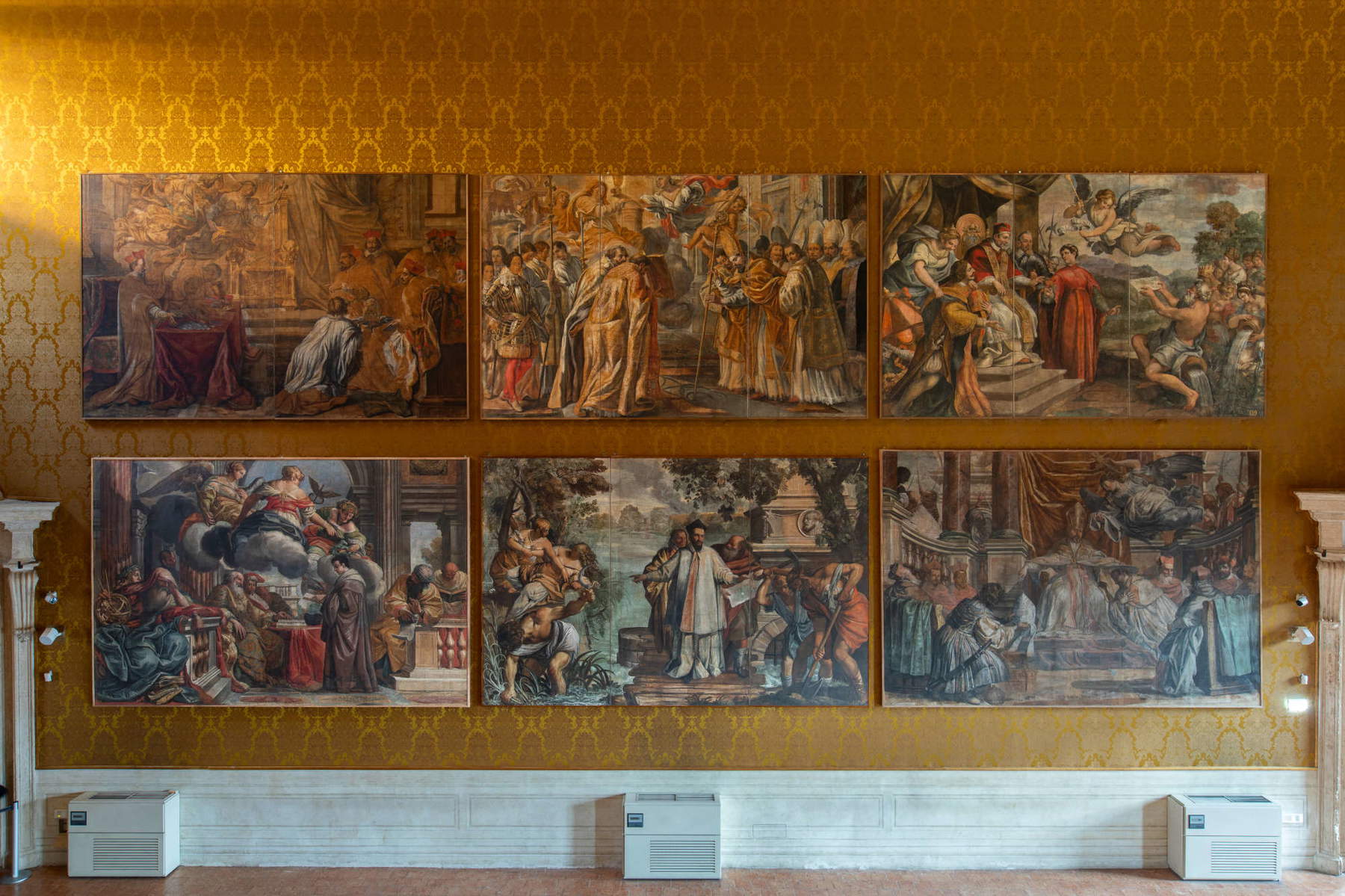
For more than three centuries, these works have inhabited the spaces of Palazzo Barberini, becoming an integral part of its visual and cultural identity. Over time, however, conservation needs and museographic transformations led to their removal, relegating them to a marginal role. Today, thanks to this work of recovery, restoration and study, the cartoons return to center stage, allowing the public to immerse themselves in one of the highest expressions of Baroque art.
The rearrangement of the hall aims to offer a new and coherent reading of the entire decorative program with the intention of giving visitors the opportunity to grasp the complex interweaving of painting, weaving, architecture and political propaganda. The simultaneous presence of the ceiling frescoes and the cartoons on the walls allows for an overall view that aims to do justice to the unity of the original project.
 |
| Rome, the Salone di Pietro da Cortona refurbished at Palazzo Barberini |
Warning: the translation into English of the original Italian article was created using automatic tools. We undertake to review all articles, but we do not guarantee the total absence of inaccuracies in the translation due to the program. You can find the original by clicking on the ITA button. If you find any mistake,please contact us.